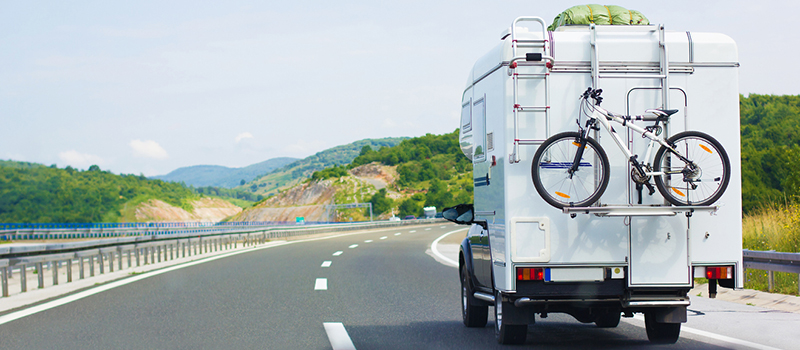Fun and Safety Tips for Summer RV Travel
Fun and Safety Tips for Summer RV Travel

Fun and Safety Tips for Summer RV Travel
People love to take a break from daily life and experience something new during the summer. If you own or rent a recreational vehicle (RV), you can explore without worrying about finding a place to stay along the way. Whenever driving fatigue sets in, you can pull over and take a comfortable break or nap.
However, RV trips are much more enjoyable when you stay safe and know how to have fun. So, here are our top tips for your next trip.
Buckle Up for a Safe Drive
Not all states require all passengers in the back of an RV to wear seatbelts, but it is recommended that all passengers are buckled when the RV is moving. It’s important to also know the state RV seatbelt laws as you go on your journey. A quick stop could result in someone losing their balance and getting hurt if they aren’t strapped in.
Know Your RV's Height
A huge trip nightmare would be hitting something because you don’t know the minimum height of your vehicle. Have the height and weight of your RV written down and taped to the dashboard so you can quickly double-check as you approach clearance signs. Some bridges, signs, fast food overhangs and gas station canopies may not accommodate your vehicle.
Plan Your Route
A lot goes into planning a great road trip. It's a good idea to plan your route before you take off.
- Find Fun Stops: Search online to find the best things to do along your route, taking breaks from driving and stretching your legs while seeing the sights.
- Avoid Hazardous Driving Conditions: Check the forecast ahead of time so you can try to avoid bad weather.
- Choose an RV-Friendly Path: With an RV-specific GPS, you can ensure your route is as RV-friendly as possible without limiting height or weight restrictions.
- Watch for Traffic Updates: You can avoid unnecessary delays in your trip by checking for traffic updates and construction zones that might be in your path.
Include the Essentials
The National Safety Council (NSC) recommends always keeping emergency supplies in your vehicle and checking it every six months. Here are some items you should include in an emergency vehicle kit:
- Flashlight and batteries
- First aid kit
- Reflective triangles and vest
- Jumper cables
- Fire extinguisher
- A properly inflated spare tire, jack and wrench
- Plenty of extra drinking water
- Rain poncho and tarp
- Nonperishable foods
- Extra motor oil/fluids
- RV registration
Practice Before You Leave
Don't hit the road before you are familiar with your vehicle. RVs can be difficult to turn and back up. You might not realize how different it is from what you are used to, and a road trip is not the right time to start practicing.
If you haven't ever driven your RV or a lot of time has passed since your last trip, it's a good idea to take a spin around the block and get familiar with the vehicle, including plenty of turns. There are also RV driving courses available if you want to learn about RV safety.
